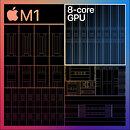Bitcoin Price Reaches 100,000 US Dollars Per Coin, New All-Time High
The price of a single Bitcoin has officially passed 100,000 US Dollar, making it a new record for the first implementation of digital cryptocurrency. The surge above 100,000 US Dollars comes a few hours after Jerome Powell, Chair of the Federal Reserve of the United States, made comments that "people use Bitcoin as a speculative asset. It's like gold, it's just like gold—only it's virtual, it's digital." At the time of writing, the price of Bitcoin is equivalent to 102,725 US Dollars, with market capitalization of 2.04 trillion US Dollars. Interestingly, at an all time high range, Bitcoin managed to hit the $103,587 point, which is a bit higher than the current price.
At TechPowerUp, we made numerous posts about Bitcoin, and we recall celebrating its jump to $20,000 in 2020. Today's pricing makes it hard to believe just how far the cryptocurrency has managed to go, with large institutions launching their own crypto-tracking ETFs.
At TechPowerUp, we made numerous posts about Bitcoin, and we recall celebrating its jump to $20,000 in 2020. Today's pricing makes it hard to believe just how far the cryptocurrency has managed to go, with large institutions launching their own crypto-tracking ETFs.



















































